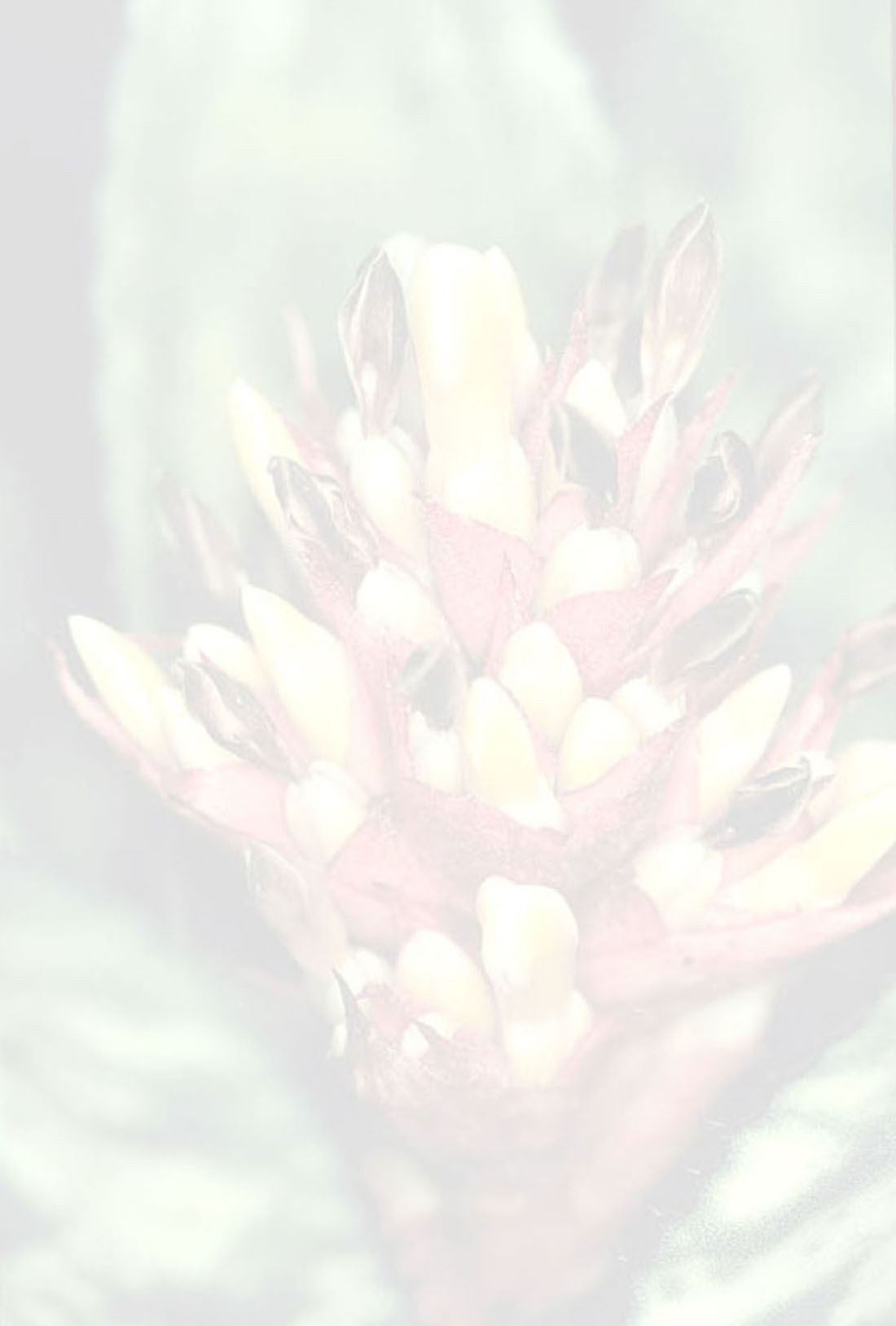Aechmea bromeliifolia (Rudge) Baker ex Benth. & Hook.f.
Literature references:
*move your mouse pointer over the page numbers to see comment
Comments:
- Local name. Pina del monte (Peru); gravata, gravata de pau (Brazil). —See Smith & Downs 1979
- Distribution and habitat: Aechmea bromeliifolia var. bromeliifolia occurs from Central America (Mexico, Guatemala, El Salvador and Honduras), to northwest of South America (Guianas, Suriname, Trinidad and Tobago, Venezuela, Colombia, Peru, Bolivia) and Brazil (Maranhao, Ceara, Bahia, Minas Gerais, Sao Paulo, Tocantins, Goids, Mato Grosso, Amapa, Roraima, Pard, Amazonas and Rondonia states and in Distrito Federal (Fig. 6).
It grows at 140-1700 m altitude, in Amazonian campinas and terra firme forests, semi-deciduous forests, savannas (cerrados), rocky grasslands (campos rupestres) and caatinga vegetation.
Conservation status: Least Concern (IUCN, 2001).
Notes: With one of the widest geographical distributions within Bromelioideae, A. bromeliifolia var. bromeliifolia is the best represented taxon of the complex in herbarium collections. This taxon also presents an extensive list of synonyms. Here, we kept the 14 taxonomic synonyms considered by Smith & Downs (1979) and propose two more: A. bromeliifolia var. angustispica (see previous discussion) and A. lagenaria (a synonym of A. lamarchei prior to this study). This last is justified because A. lagenaria shows many typical characters of A. bromeliifolia (e.g. leaf spines > 3 mm and truncate floral bracts) that are not founded in A. lamarchei. Despite the great morphological variation of some vegetative structures (e.g. rosette and leaf shape), A. bromeliifolia var. bromeliifolia is delimited by a set of reproductive characters, including flowers 1.4-1.6 cm long, densely lanate, depressed ovate floral bracts, with truncate or truncate emarginate apices and yellow petals with fimbriate ligulae at the distal end of the lateral folds (Fig. 5B, C, E). This species also resembles A. triangularis in having leaf spines ≥ 3 cm, emarginate, symmetric to slightly asymmetric sepals, connate to the middle, and spatulate petals with emarginated apices (Fig. 5D, E). —See Faria, Wendt & Brown 2010

